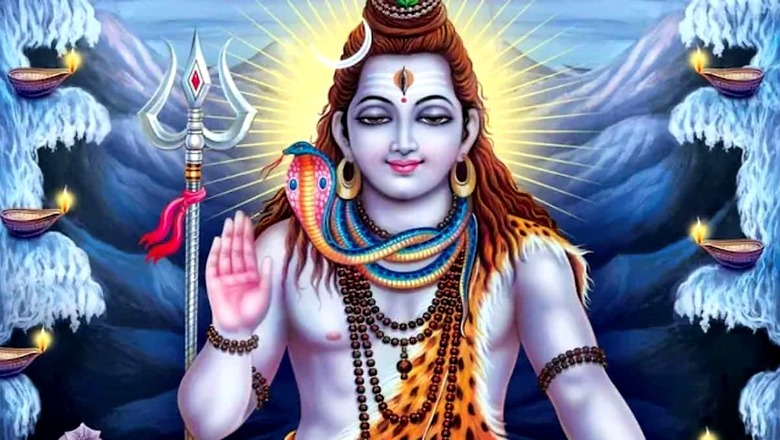
views
Sawan Shivaratri is considered a significant Hindu festival dedicated to Lord Shiva, which falls during the month of Sawan and is regarded as highly auspicious for worshipping Lord Shiva. The festival is observed on the 14th day of Krishna Paksha usually in the month of Sawan that is in July or August.
This year, August 2 is the auspicious day of Sawan Shivaratri.
It is believed that Sawan Shivaratri is significant for the devotees of Lord Shiva as they celebrate this day with devotion, symbolising the importance of Lord Shiva as the supreme deity of destruction and transformation. According to mythology, Shiva’s act of consuming poison during the churning of the cosmic ocean symbolises his role as the universe’s protector.
It is also believed that during this day, Kanwar pilgrims will take Gangajal or water from Holy rivers and offer it on the Shivalinga. Performing this ritual, Lord Shiva will fulfil all their wishes. Devotees will also commemorate this day through fasting, prayer and rituals such as Jalabhishek and Rudrabhishek while some choose to undertake a complete fast known as Nirjala Vrat.
Time and Date of Sawan Krishna Chaturdashi and Sarvartha Siddhi Yoga
- Sawan Krishna Chaturdashi Tithi, starting on August 2, Friday, from 3:26 pm.
- Sawan Krishna Chaturdashi Tithi ends on August 3 at 3:50 pm.
- Sarvartha Siddhi yoga will be performed on August 2 from 10:59 am to 12: 49 pm.
- Sawan Shivaratri Puja timings – 12:06 am to 12:49 am.
The Timing and Significance of Performing Jalabhishek on Sawan Shivaratri:
Jalabhishek holds a special significance in Hindu rituals, especially for the devotees of Lord Shiva. Devotees perform this ritual during Sawan Shivaratri. Devotees pour water on the Shivalinga which is considered a significant symbol of purification. The most auspicious time for performing Jalabhishek is during Nishita Kaal, the midnight hour. Pradosh Kaal which is the period between sunset and night is also considered as auspicious for performing the ritual.
Importance of Performing Rudrabhishek and Best Time to Perform It:
Rudrabhishek is also considered significant during Sawan Shivaratri which is the ceremonial bath of the Shivalinga with various sacred substances, accompanied by the chanting of powerful mantras. The auspicious time for performing Rudrabhishek is during the nighttime or the Pradosh Kaal.
Things With Which Rudrabhishek Should Be Performed:
- Water and milk- Water is the basic and most essential offering, symbolising purity and cleansing of sins. Whereas, milk is offered to please Lord Shiva and also symbolises purity, nourishment and the calming of Lord Shiva’s fiery temperament.
- Honey and curd- Offering honey during Rudrabhishek is believed to bring sweetness into one’s life and foster harmony. Whereas, curd is provided to ensure prosperity, fertility and the smooth running of one’s life.
- Ghee and sugarcane juice- Ghee is offered as it enhances wisdom, intelligence and spiritual strength. Sugarcane juice symbolises the nectar of immortality and is believed to purify the mind and body.




















Comments
0 comment